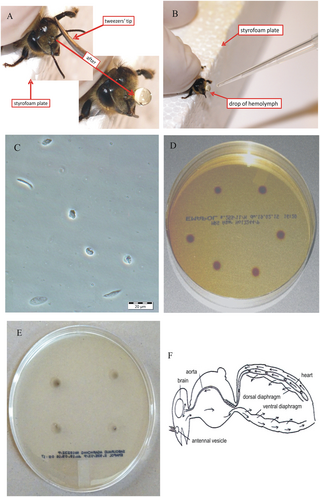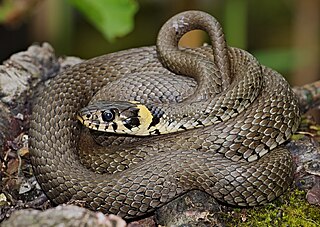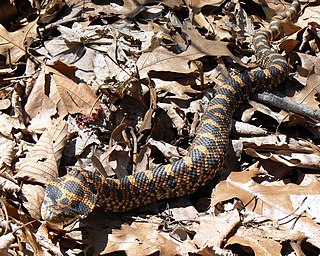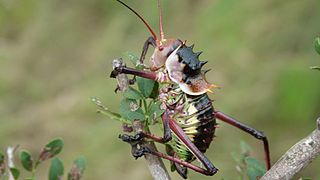
Lizard is the common name used for all squamate reptiles other than snakes, encompassing over 7,000 species, ranging across all continents except Antarctica, as well as most oceanic island chains. The grouping is paraphyletic as some lizards are more closely related to snakes than they are to other lizards. Lizards range in size from chameleons and geckos a few centimeters long to the 3-meter-long Komodo dragon.

Hemolymph, or haemolymph, is a fluid, analogous to the blood in vertebrates, that circulates in the interior of the arthropod (invertebrate) body, remaining in direct contact with the animal's tissues. It is composed of a fluid plasma in which hemolymph cells called hemocytes are suspended. In addition to hemocytes, the plasma also contains many chemicals. It is the major tissue type of the open circulatory system characteristic of arthropods. In addition, some non-arthropods such as mollusks possess a hemolymphatic circulatory system.

The froghoppers, or the superfamily Cercopoidea, are a group of hemipteran insects in the suborder Auchenorrhyncha. Adults are capable of jumping many times their height and length, giving the group their common name, but many species are best known for their plant-sucking nymphs which produce foam shelters, and are referred to as "spittlebugs".

The greater short-horned lizard, also commonly known as the mountain short-horned lizard or Hernández's short-horned lizard, is a species of lizard in the family Phrynosomatidae. The species is endemic to western North America. Like other horned lizards, it is often called a "horned toad" or "horny toad", but it is not a toad at all. It is a reptile, not an amphibian. It is one of seven native species of lizards in Canada.

The grass snake, sometimes called the ringed snake or water snake, is a Eurasian semi-aquatic non-venomous colubrid snake. It is often found near water and feeds almost exclusively on amphibians.

Grasshoppers are a group of insects belonging to the suborder Caelifera. They are amongst what are possibly the most ancient living groups of chewing herbivorous insects, dating back to the early Triassic around 250 million years ago.

Anti-predator adaptations are mechanisms developed through evolution that assist prey organisms in their constant struggle against predators. Throughout the animal kingdom, adaptations have evolved for every stage of this struggle, namely by avoiding detection, warding off attack, fighting back, or escaping when caught.

Hognose snake is a common name for several unrelated species of snakes with upturned snouts, classified in two colubrid snake families and one pseudoxyrhophiid snake family.

Apparent death is a behavior in which animals take on the appearance of being dead. It is an immobile state most often triggered by a predatory attack and can be found in a wide range of animals from insects and crustaceans to mammals, birds, reptiles, amphibians, and fish. Apparent death is separate from the freezing behavior seen in some animals.

Acanthoplus discoidalis is a species in the Hetrodinae, a subfamily of the katydid family (Tettigoniidae). Like its closest relatives, Acanthoplus discoidalis variously bears common names such as armoured katydid, armoured ground cricket, armoured bush cricket, corn cricket, setotojane and koringkriek. The species is native to parts of Angola, Namibia, Botswana, Zimbabwe and South Africa.

Acanthoplus is a genus of African bush crickets in the subfamily Hetrodinae and tribe Acanthoplini.

The common watersnake is a species of large, nonvenomous, common snake in the family Colubridae. The species is native to North America. It is frequently mistaken for the venomous cottonmouth.

Philaenus spumarius, the meadow froghopper or meadow spittlebug, is a species of insect belonging to the spittlebug family Aphrophoridae. In Italy and America, it is economically important as one of the vectors of Pierce's disease.
Panoploscelis is a genus of very large insects belonging to the true katydid tribe Eucocconotini, which is a subfamily of the Tettigoniidae. Like the other members of the suborder Ensifera, Panoploscelis are part of the insect order Orthoptera, which also contains crickets, grasshoppers and locusts. Members of this genus are among the largest katydids of the Neotropics.

Leioheterodon madagascariensis, the Malagasy, Madagascar or Madagascangiant hognose(snake), is a harmless species of pseudoxyrhophiid snake endemic to the island nation of Madagascar. The species is also found on the country's smaller islands of Nosy Be, Nosy Mangabe, and Nosy Sakatia, as well as on the Comoros archipelago, in the Mozambique Channel. It is thought, by some, to have been introduced to the Grande Comoro. Mature giant hognose snakes can measure between 130 and 180 cm (4 ft. to nearly 6 ft., or between 1-2 meters) in length, and be roughly the thickness of an average adult human's arm.
Parasanaa is a genus of bush-cricket recorded from India, Indochina, Malesia through to New Guinea. It is represented by a single species, Parasanaa donovani

The subgenual organ is an organ in insects that is involved in the perception of sound. The name refers to the location of the organ just below the knee in the tibia of all legs in most insects.

Asbolus verrucosus(LeConte, 1852), also known as the desert ironclad beetle or blue death feigning beetle, is a species of darkling beetle native to southwestern United States and northwestern Mexico, where it inhabits dry, sandy habitats such as the Sonoran and Mojave Deserts. It is highly adapted to hot environments and is omnivorous, consuming dead insects, fruits, lichen, and other plant matter. When threatened, the beetles are able to feign death. The species is becoming increasingly popular in the pet trade, due to their ease of care, hardiness, and longevity.

The barred grass snake is a non-venomous colubrid snake from Western Europe, living in and close to water. It was included within the grass snake species, Natrix natrix, until August 2017, when genetic analysis led to its reclassification as a separate species.



















